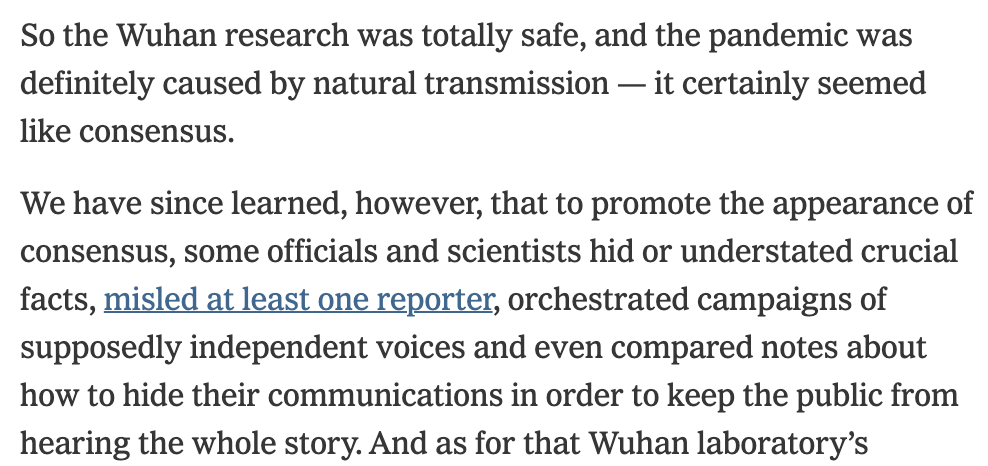By Paul Homewood
Another mindbendingly naive piece by the Mail’s Joe Pinkstone:
Antarctica is shedding ice at a staggering rate.
Scientists have discovered global warming has caused the melting of the ice on the continent to increase sixfold since 1979.
This phenomenal rate of melting has seen global sea levels rise by more than half an inch – and experts predict it will get worse.
Scientists have predicted a ‘multi-meter sea level rise from Antarctica in the coming centuries’ as a result of the vast loss of ice.
Researchers discovered that, between 1970 and 1990, the continent was shedding an average of 40 gigatons of ice mass annually.
This jumped to an average of 252 gigatons a year between 2009 and 2017.
You may of course recall that it was only three years ago that the same NASA, who are behind this latest scare story, were telling us that the ice cap was actually growing in Antarctica. But more of that in a minute.
There are several aspects to this latest story that need closer examination.
Firstly, according to NASA’s own press release, the study only looks at data since 1992. The Mail’s headline that “Antarctica is losing SIX TIMES more ice a year than it was in the 1970s “ is totally fake, as there is no data for the 1970s. Any estimates of ice loss in the 1970s and 80s are pure guesswork, and have never been part of this NASA IMBIE study, or previous ones.
Secondly, the period since 1992 is a ridiculously short period on which to base any meaningful conclusions at all. Changes over the period may well be due to natural, short term fluctuations, for instance ocean cycles. We know, as the NASA study states, that ice loss in West Antarctica is mainly due to the inflow of warmer seas.
The eruption of Pinatubo in 1991 is another factor. Global temperatures fell during the next five years, and may well have slowed down ice melt.
Either way, Pinkstone’s claim that the ice loss is due to global warming is fake. It is a change in ocean current that is responsible, and nothing to do with global warming.
Then there is his pathetic claim that “Antarctica is shedding ice at a staggering rate”. Alarmist scientists, and gullible reporters, love to quote impressive sounding numbers, like 252 gigatons a year. In fact, as NASA point out, the effect on sea level rise since 1992 is a mere 7.6mm, equivalent to 30mm/century.
Given that global sea levels have risen no faster since 1992 than they did in the mid 20thC, there is no evidence that Antarctica is losing ice any faster than then. To call it staggering is infantile.
NASA also reckon that ice losses from Antarctica between 2012 and 2017 increased sea levels by 3mm, equivalent to 60mm/century. Again hardly a scary figure. But again we must be very careful about drawing conclusions from such a short period of time. Since 2012, we have had a record 2-year long El Nino. What effect has this had?
But back to that previous NASA study, carried out by Jay Zwally in 2015, which found:
A new NASA study says that an increase in Antarctic snow accumulation that began 10,000 years ago is currently adding enough ice to the continent to outweigh the increased losses from its thinning glaciers.
The research challenges the conclusions of other studies, including the Intergovernmental Panel on Climate Change’s (IPCC) 2013 report, which says that Antarctica is overall losing land ice.
According to the new analysis of satellite data, the Antarctic ice sheet showed a net gain of 112 billion tons of ice a year from 1992 to 2001. That net gain slowed to 82 billion tons of ice per year between 2003 and 2008.
Far from losing ice, as the new study thinks, Zwally’s 2015 analysis found the opposite, that the ice sheet was growing.
OK, Zwally’s data only went up to 2008, but there are still huge differences. Whereas Zwally estimates ice gain of between 82 and 112 billion tonnes a year between 1992 and 2008, the new effort guesses at a loss of 83 billion tonnes a year.
It is worth pointing out that Zwally’s comment about the IPCC 2013 report refers to the 2012 IMBIE report, which was the forerunner to the new study, the 2018 IMBIE.
Quite simply, nobody has the faintest idea whether the ice cap is growing or shrinking, never mind by how much, as the error margins and uncertainties are so huge.
The best guide to such matters comes from tide gauges around the world. And these continue to show that sea levels are rising no faster then mid 20thC, and at a rate of around 8 inches per century.






